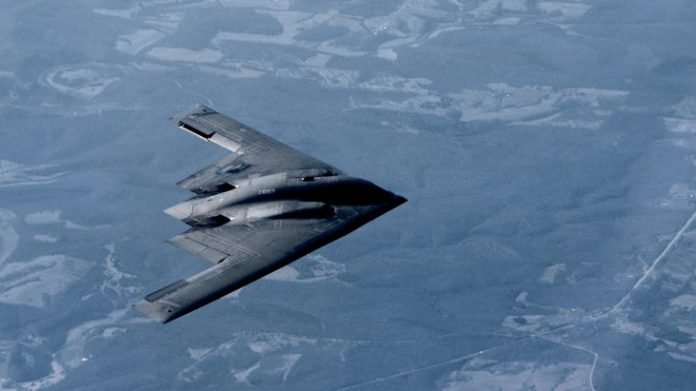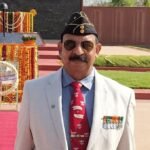On June 21 midnight, six B-2 Stealth bombers rolled out of hangers and lined up on the taxi bay at Whiteman US Air Force base, Knob Noster in Missouri, about 100 km southeast of Kansas City, eastern United States. The base is the home to B-2s of the 509 USAF Bomber Wing. The Big Bats took off one by one, gracefully between 1230h and 1245h from Runway 19 and in early morning, landed at Anderson US Naval base at Guam in the mid-Pacific. The mission was top secret. This was the decoy for Operation Midnight Hammer. Meanwhile, another squadron of Big Bats took off at 1300h on the same day from the same base and headed towards West Asia across the Atlantic Ocean.
The main B-2 group gained a height of 12,000 metres and cruised undetected with radio silence at speed of 720 knots heading east. The B-2s had a crew of two pilots each. They continuously flew for 17 hours. They were capable of travelling non-stop for 11,000 km. The journey from Kansas City to Tehran was almost 21,000 km, so they had to be refuelled by the super tanker Boeing KC-46. As the B-2s crossed Israel and were approaching Iranian airspace, they were covered by F-35 fighter escorts, which carried out wide sweeps to confuse Iranian SAM Air Defence batteries.
Operation Midnight Hammer
Around 0210h on June 22, six B-2 bombers released their deadly payloads of two GBU 57 (Bunker Busters) GPS-guided smart bombs weighing a massive 13,600 kg each (total 12 X GBU 57) on the Fordo Uranium Enrichment facility in central Iran, located almost 200 metres deep inside a mountain.
Simultaneously, the seventh B-2 released its payload on the Natanz nuclear base. The Isfahan nuclear plant was attacked by 20 Tomahawk cruise missiles from a special task force of US Navy Ohio-class submarines, SSBN, operating from the Gulf. There were massive explosions and fireballs at all three sites. Iran’s defence forces were caught flat-footed and were surprised by a rain of death from the dark sky.
Around 0210h on June 22, six B-2 bombers released their deadly payloads of two GBU 57 (Bunker Busters) GPS-guided smart bombs weighing a massive 13,600 kg each (total 12 X GBU 57) on the Fordo Uranium Enrichment facility in central Iran, located almost 200 metres deep inside a mountain
President Donald Trump declared in an evening briefing on June 22 to the international media at the Pentagon that the spectacular United States Armed Forces accomplished the mission. Iran’s three nuclear facilities, located at Fordo, Natanz, and Isfahan, had been obliterated. The chairman of the Joint Chiefs of Staff, General Dan Caine, said Iran’s nuclear sites sustained severe damage, but it will be too soon to say whether Iran still retains some of its nuclear capability.
All B-2 bombers returned to base after continuously flying for 17 hours. One B-2 bomber from the decoy group landed at Honolulu Airbase in the Hawaiian Islands for technical reasons. “All pilots are safe and sound,” said the US Air Force. President Trump warned Iran not to retaliate and to restart diplomatic negotiations. US Defence Secretary Pete Hegseth said in a morning conference that the US did not seek war. Iran conveyed that the time of diplomacy had passed, and “we would protect our sovereignty at all costs.” Iran threatened to close the Strait of Hormuz.
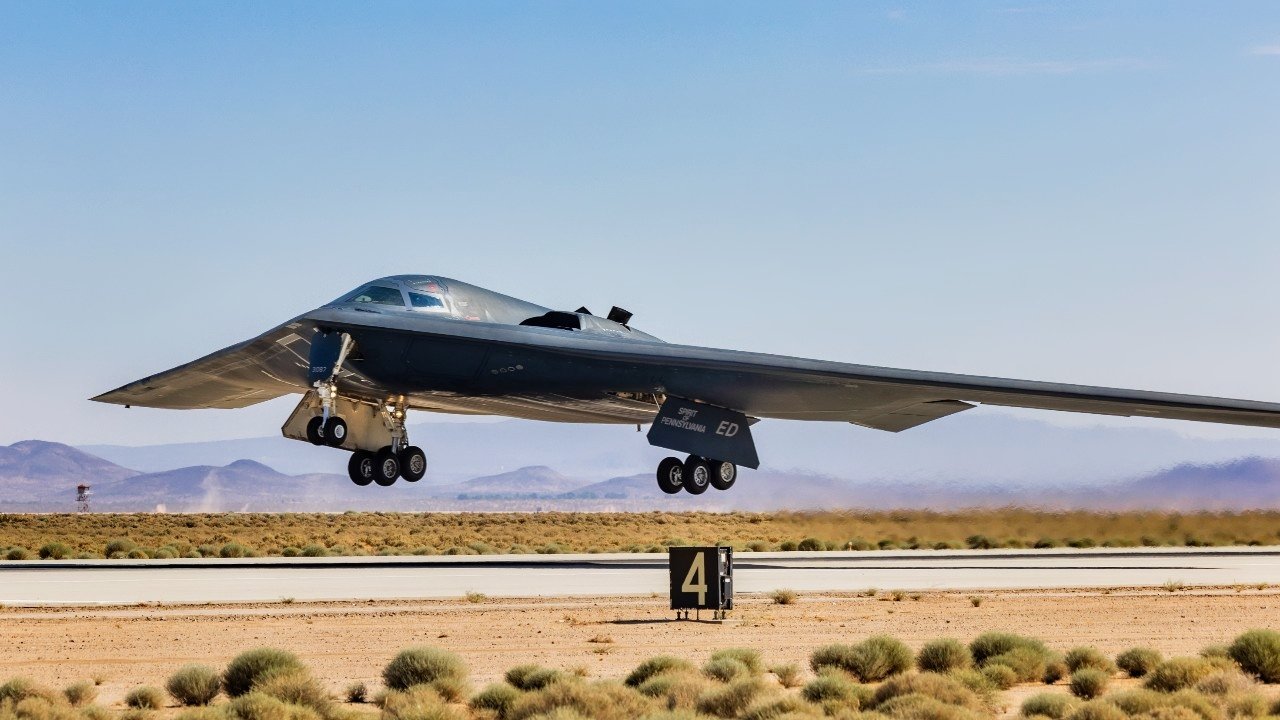
Iran’s Counterattack
On June 24, US assets in the UAE, Qatar and Bahrain were attacked by Iranian missiles. More missiles were launched at Israel, but Iran had lost the will to fight. They started a narrative that “we knew about the intentions of America and we had shifted the Uranium to a safer place and still had the enriched material.” Satellites confirmed the movement of 70 trucks from the Fordo tunnels. Whatever the truth, the fact remains that B-2 Spirits emerged as heroes and gave a mortal blow to Iran’s nuclear weapon project. Let’s now study the story of Big Bats.
The Story of Big Bats
B-2 Spirit, a heavy stealth strategic bomber manufactured by the Northrop Grumman aviation giant, is the pride of the USAF. The aircraft is shaped like a huge, dark bat, without a fuselage and tail, and contains radars and elevators. Everything is hidden in big triangular wings. The aircraft is a subsonic bomber with four turbo engines neatly concealed in the wings.
The USAF wanted a strategic bomber, and a project named Advanced Technology Bomber (ATB) was initiated by the Carter administration in 1989. Two models were produced: B-1, a supersonic bomber, and B-2, with subsonic capability, incorporating total stealth technology and capable of carrying a 30,000 kg payload. B-2 was finally approved. Initially, there was a plan to produce 132 B-2 bombers. The cost of production was nearly $2 billion per aircraft. Finally, the US Senate sanctioned only 21 B-2 bombers due to huge cost escalation.
The most important feature of B-2 is stealth, the feature achieved by its design, carbon-composite material, anti-infrared paint and suppressed exhaust. Its thermal image would appear in an enemy radar/surveillance system similar to a sparrow
Each B-2 Spirit has four General Electric F118-GE-100 non-afterburner turbofan engines, with 77 KN thrust each, with S-shaped suppressed exhaust. It can achieve a speed of 1010 kmph. It has a fuel capacity of 75,750 kg of aviation fuel and can be refuelled midway. It can accomplish attack missions at an altitude of 15 km (50,000 feet). Its cruising range is 11,000 km and can be enhanced to 19,000 km with one mid-air refuelling. It entered service in 1997 and was primarily designed as a nuclear bomber. It has a two-man crew. The crew comfort includes a berth for rest, a small kitchenette, and a mini toilet for long missions.
The bomber can drop conventional and thermonuclear weapons. The underbelly can carry 16 B-83 nuclear bombs of 1100 kg each, or 80 conventional 500 kg Mk 82 JDAM GPS guided bombs or two GBU 57 weighing 13,400 kg each. It can even carry stand-off air-to-surface missiles. The most important feature of the big bird is stealth, which has been achieved in its design, carbon composite material, anti-infrared paint and suppressed exhaust. The thermal image of a B-2 Spirit would appear in an enemy radar/surveillance system similar to a sparrow.
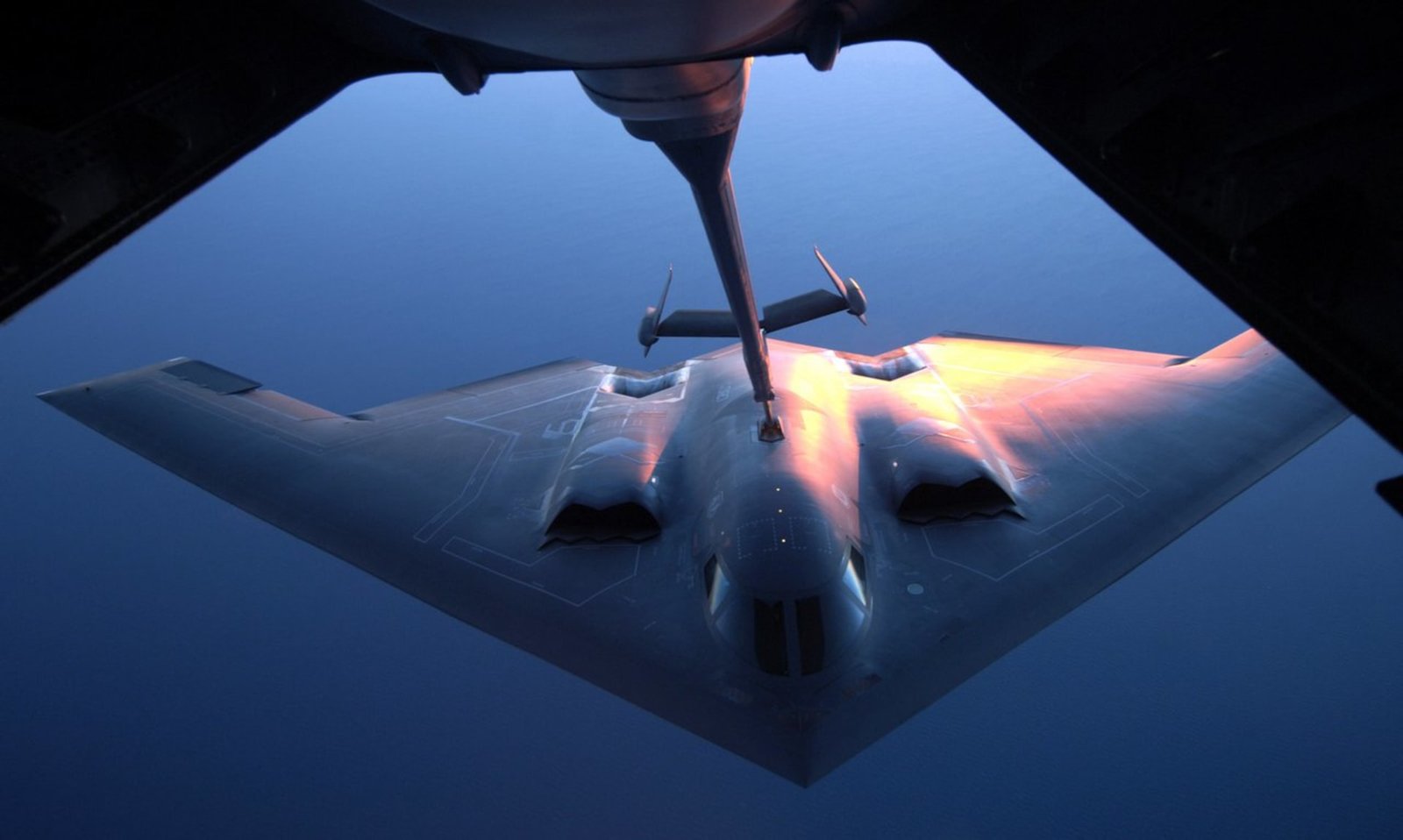
The project to design and develop the B-2 Stealth bomber was codenamed Advanced System Division. It was one of the most closely guarded top-secret projects. A former Ford automobile assembly plant at Pico Rivera, California, was acquired and modified in 1989. All scientists and technicians were scanned and sworn an oath of secrecy.
B-2 was publicly displayed on November 22, 1988, and made its first public flight on July 17, 1989, from Edwards Air Force Base. Despite all secrecy measures, there were two espionage cases. Thomas Patrik Cavanagh, a Northrop employee working for KGB, was arrested in 1984 for selling secret information on the B-2 design to Russia. Later, an Indian-origin design engineer, Noshir Gowadia, was apprehended in 2005 for sharing information on the propulsion system with China. He was convicted and sentenced to 32 years’ rigorous imprisonment by the US Defence court.
The US Air Force initially had 21 B-2 bombers but presently has 19 B-2 Stealth bombers in its inventory. Two B-2 bombers were lost in accidents in 2008 and 2022. B-2 fleet will remain a frontline force until 2035 and is likely to be replaced by B-21 raiders, which are undergoing trials.
The First Combat Mission
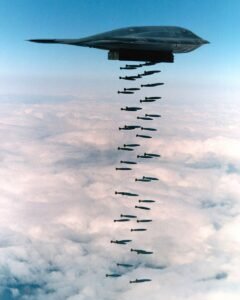 The first operational aircraft, named Spirit of Missouri, was delivered to the US Air Force on December 17, 1993, and was located at Whiteman Air Force Base in Missouri. It achieved operational clearance in 1997. The first combat mission carried out by B-2 bombers was in 1999 during the Kosovo War. Six B-2s were used to drop JDAM GPS-guided bombs on Yugoslavian federal forces and undertook 33 sorties. It replaced the concept of carpet bombing of World War 2 vintage tactics, causing huge collateral damage to civilian targets by precision bombing on selected targets of military value. B-2s were used in the war against the Taliban and Osama bin Laden-led terror organisation Al Qaeda in Afghanistan. It achieved great results in Operation Enduring Freedom/Operation Crescent Wind between 2001 and 2021. During Operation Desert Storm, the B-2 squadron played havoc on Iraqi Armoured forces waiting for a counterattack.
The first operational aircraft, named Spirit of Missouri, was delivered to the US Air Force on December 17, 1993, and was located at Whiteman Air Force Base in Missouri. It achieved operational clearance in 1997. The first combat mission carried out by B-2 bombers was in 1999 during the Kosovo War. Six B-2s were used to drop JDAM GPS-guided bombs on Yugoslavian federal forces and undertook 33 sorties. It replaced the concept of carpet bombing of World War 2 vintage tactics, causing huge collateral damage to civilian targets by precision bombing on selected targets of military value. B-2s were used in the war against the Taliban and Osama bin Laden-led terror organisation Al Qaeda in Afghanistan. It achieved great results in Operation Enduring Freedom/Operation Crescent Wind between 2001 and 2021. During Operation Desert Storm, the B-2 squadron played havoc on Iraqi Armoured forces waiting for a counterattack.
Operation Odyssey Dawn was launched against Libya, and B-2 played an active role and dropped 40 bombs on a Libyan airfield as part of UN mandate. A raid was also planned at the residence of Osama Bin Laden in Abbottabad, Pakistan, but was not undertaken due to the risk of collateral damage.
B-2 Spirit stealth bombers, named Big Bats due to their shape, will remain the crown of the US Air Force for another decade as a deadly strategic asset, which has turned many wars in favour of the US and NATO, delivering a decisive knockout punch
On January 18, 2017, B-2s demolished an Al-Qaeda terror camp in Libya. On October 15, 2024, B-2s carried out a special mission against an underground logistics base and ammunition dump of the Houthi terrorist group based in Yemen, as they were attacking cargo ocean liners in the Red Sea. It was a warning to Iran that the US can hit its nuclear sites at any time if it decides to intervene. The master stroke, Midnight Hammer, was launched in the wee hours of June 22, 2025, shattering Iran’s dream to join the nuclear club and become a hero of the Islamic world.
B-2 Spirit will remain the crown of the United States Air Force for another decade as a deadly strategic asset, which has turned many wars in favour of the US and NATO, delivering a decisive knockout punch.
-The writer is an Indian Army veteran and a defence analyst. He has keen interest in Geo-strategic affairs and writes regularly on internal and external affairs issues related to India and neighbours. The views expressed are personal and do not necessarily reflect the views of Raksha Anirveda

